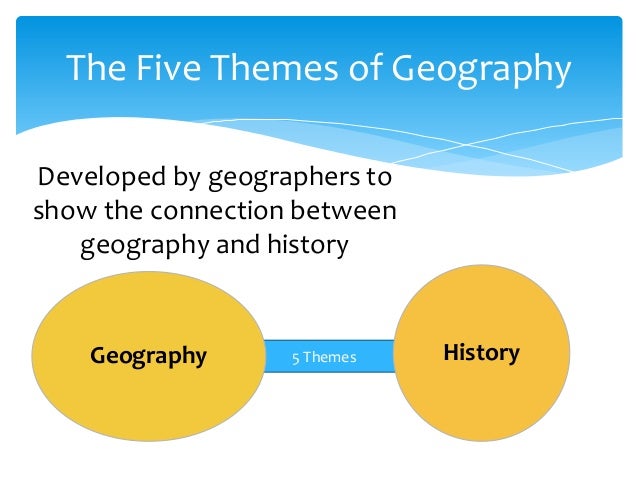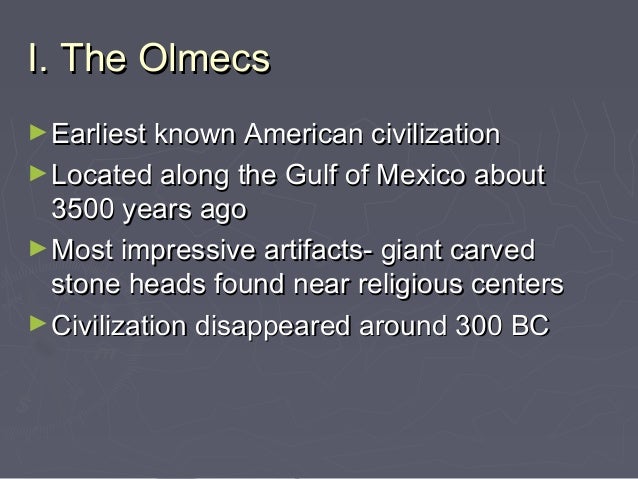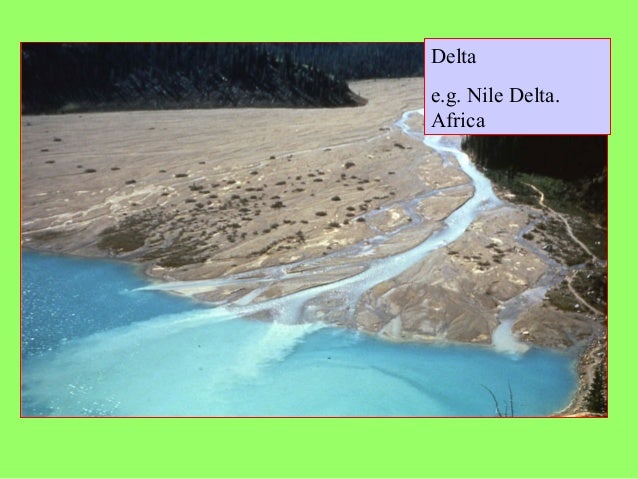In high school, your Geography class probably focused on maps and locations. But, the field is so much broader than that. Geography bridges the physical and human world, using scientific methods to explain and predict people's impact on the planet and the planet's impact on people. Geographic Information Systems (GIS) Lab. The Geography Department is the home of Geographic Information Systems (GIS) at Sacramento State. The focus of the focus is to help students develop both a theoretical understanding of and practical experience using GIS that prepares them for the job market or graduate work. Geography is a broad discipline that encompasses natural sciences, social sciences, and humanities. The Geography minor complements most majors and offers a broad foundational background of knowledge about the world and spatial sciences.
The then-established views regarding the nature of geography were set out in two large volumes in the early 1950s: Geography in the Twentieth Century (1951), edited by Griffith Taylor, and American Geography: Inventory and Prospect (1954), edited by Preston James and Clarence Jones. However, by then there was growing unease in North America and the United Kingdom with the dominant orientation of the discipline. It was seen as overemphasizing vertical (or society-environment) relationships and largely ignoring the horizontal (or spatial) relationships that characterized societies in which movement and exchange were so important. Geographers, it was argued, should pay more attention to spatial organization of economic, social, and political activities across the environmental backdrops. Too much effort was spent, as George Kimble expressed it,
drawing boundaries that don’t exist around areas that don’t matter…from the air it is the links in the landscape that impress the observer, not the boundaries.
Studies of areal functional organization were inaugurated, both for their intrinsic interest and because of their value; one pioneer, Robert Dickinson, argued that functional regions around towns and cities should be used to define regional and local government areas.
There was also a growing belief that the methods for defining regions were out of line with the scientific approaches characterizing other disciplines. Some felt that geographers had not contributed well to the war effort: Edward A. Ackerman, a professor of geography at the University of Chicago from 1948 to 1955 (and later head of the Carnegie Foundation), claimed that those working in the U.S. government’s intelligence service had only a weak understanding of their material and portrayed them as “more or less amateurs in the subjects on which they published.” He argued that geographers should follow not only the natural sciences but also most of the social sciences and should adopt more-rigorous research procedures.
Although there were moves in those directions in a number of places, the arguments were focused in 1953 by a paper in the prestigious Annals of the Association of American Geographers that strongly criticized what Ackerman called the “Hartshornian [i.e., regional] orthodoxy.” Kurt Schaefer, a German-trained geographer at the University of Iowa, argued that science is characterized by its explanations. These involve laws, or generalized statements of observed regularities, that identify cause-and-effect relationships. According to Schaefer, “to explain the phenomena one has described means always to recognize them as instances of laws”; for him the major regularities that geographers study relate to spatial patterns (the horizontal relationships identified above), and so “geography has to be conceived as the science concerned with the formulation of the laws governing the spatial distribution of certain features on the earth’s surface.”
Schaefer codified what an increasing number of geographers were thinking, identifying a need for a major reorientation of—if not revolution in—its practices. The main thrusts occurred elsewhere. One of the most influential early centres was the University of Washington in Seattle, led by William Garrison and Edward Ullman. Their students, such as Brian Berry, William Bunge, Richard Morrill, and Waldo Tobler, became leading protagonists of the new geography, which rapidly spread to other universities in the United States, such as Northwestern, Chicago, and Ohio State in Columbus. It soon reached the United Kingdom, with initial centres at Cambridge and Bristol.
Much inspiration for these shifts came from economists, sociologists, and other social scientists, who were developing theories of spatial organization and using quantitative methods to test their hypotheses. The human geographers who followed their lead promoted in their practices what became known as the “quantitative and theoretical revolution.” So too did physical geographers, who, for example, switched their focus from simply describing landforms to searching for scientific explanations of how they were created.
Geography Facts For Kids
Three main arguments underpinned this paradigm shift in geographical practice. The first was that geography should become more scientifically rigorous, adopting the experimental science model (positivism) already in use by economists. The goal included deductive reasoning, which led to hypothesis testing with the goal of producing explanatory laws. The second was that such rigour required quantitative methods to provide precise descriptions and exact, reproducible research findings—unequivocal lawlike statements. Finally, with such a shift in disciplinary practices, the applied value of geographical work would be appreciated—in, for example, environmental and city and regional planning. Geography should be the science of spatial arrangements and environmental processes. Success in this promotion of geography as a science was crucial in winning recognition for the discipline in the United States from the National Science Foundation in the 1960s, initially as part of a Geography and Regional Science Program.
The success of those promoting change was assisted by the expansion of higher education. More students were going to colleges and universities, and new institutions were being founded. More geographers were needed to teach the subject, and many of those who were recruited preferred the novel approaches. The “revolutions” were to a considerable extent generational. The larger number of practicing geographers also precluded a small number of individuals imposing their views on the discipline; instead, there was encouragement to experiment and explore new topics and approaches. Furthermore, universities were increasingly emphasizing their research as well as teaching roles, and the new generations of geographers were more active as researchers than their predecessors. So more was done by more people, leading to greater specialization. Soon geography increasingly fragmented into specialist subdisciplines.

The Department of Geography is a leader in the field of geography and offers exceptional opportunities for graduate education. The department has been consistently rated as one of the best in the country and, for over 100 years, has been the training ground for generations of geographers. The department's strength is reflected in its ability to attract top-caliber students, compete for significant research funding, and publish foundational scholarly work. The department maintains strength across the full spectrum of subfields within the discipline, and is organized into four major thematic areas: physical geography and earth system science, people and environment, human geography, and cartography/GIS.
Department faculty and graduate students represent a diverse community within which a wide range of perspectives, approaches and research strategies is accommodated. The faculty has long been recognized nationally and internationally for outstanding contributions to geography and beyond. Many graduate students have gone on to prominence within government, industry, and academia, and some of the most influential names in geography received their training in Madison.
The department offers two masters of science in geography (thesis option): a master of science in geography and a master of science in cartography and geographic information systems.
Graduate students at the M.S. level are expected to acquire a broad foundation in geography in addition to specializing in one or more areas of concentration. Students who earn the M.S. (Thesis) degree are prepared to continue on for the Ph.D., or for positions in government agencies, planning organizations, environmental agencies, nongovernmental organizations, and private industry.
Currently 65 students are enrolled in the graduate program: 10 are pursuing the M.S. in geography, 4 are pursuing the M.S. (Thesis) in cartography/GIS; and 51 are completing the Ph.D. The department takes in roughly 10–15 new graduate students each year. In recent years, about half of all incoming graduate students have completed an undergraduate major in a subject other than geography.
FACILITIES
Housed in historic Science Hall, the Department of Geography offers exceptional facilities for advanced study in geography, cartography, and GIS. The department maintains the University Cartographic Laboratory, the Arthur Robinson Map and Air Photo Library, a computer lab, several computer classrooms, and laboratory facilities specializing in biogeography, biogeochemistry, paleoecology, geomorphology, and soil research. In addition, the building houses the Wisconsin State Cartographer's Office, the History of Cartography Project, and the Gaylord Nelson Institute for Environmental Studies.

Graduate students may supplement their work in the geography department with study in other departments of the university, and there are frequent opportunities for advanced work in interdepartmental seminars. The location of the state capital at Madison makes possible easy contact with state agencies and some federal agencies.
Please consult the table below for key information about this degree program’s admissions requirements. The program may have more detailed admissions requirements, which can be found below the table or on the program’s website. Graduate admissions is a two-step process between academic programs and the Graduate School. Applicants must meet the minimum requirements of the Graduate School as well as the program(s). Once you have researched the graduate program(s) you are interested in, apply online. |
| Requirements | Detail |
|---|---|
| Fall Deadline | December 15 |
| Spring Deadline | The program does not admit in the spring. |
| Summer Deadline | The program does not admit in the summer. |
| GRE (Graduate Record Examinations) | Not required. |
| English Proficiency Test | Every applicant whose native language is not English or whose undergraduate instruction was not in English must provide an English proficiency test score and meet the Graduate School minimum requirements (https://grad.wisc.edu/apply/requirements/#english-proficiency). |
| Other Test(s) (e.g., GMAT, MCAT) | n/a |
| Letters of Recommendation Required | 3 |
Graduate School Resources
Resources to help you afford graduate study might include assistantships, fellowships, traineeships, and financial aid. Further funding information is available from the Graduate School. Be sure to check with your program for individual policies and restrictions related to funding.

Program Resources
The department tries to provide support to all incoming graduate students in the form of fellowships, teaching assistantships, or research assistantships. Most forms of financial assistance include eligibility for health insurance coverage and remission of tuition.
Minimum Graduate School Requirements
Review the Graduate School minimum academic progress and degree requirements, in addition to the program requirements listed below.

Major Requirements
MODE OF INSTRUCTION
| Face to Face | Evening/Weekend | Online | Hybrid | Accelerated |
|---|---|---|---|---|
| Yes | No | No | No | No |
Mode of Instruction Definitions

Accelerated: Accelerated programs are offered at a fast pace that condenses the time to completion. Students are able to complete a program with minimal disruptions to careers and other commitments. Evening/Weekend: Courses meet on the UW–Madison campus only in evenings and/or on weekends to accommodate typical business schedules. Students have the advantages of face-to-face courses with the flexibility to keep work and other life commitments. Face-to-Face: Courses typically meet during weekdays on the UW-Madison Campus. Hybrid: These programs combine face-to-face and online learning formats. Contact the program for more specific information. Online: These programs are offered 100% online. Some programs may require an on-campus orientation or residency experience, but the courses will be facilitated in an online format. |
CURRICULAR REQUIREMENTS
| Requirements | Detail |
|---|---|
| Minimum Credit Requirement | 30 credits |
| Minimum Residence Credit Requirement | 16 credits |
| Minimum Graduate Coursework Requirement | Half of degree coursework (15 credits out of 30 total credits) must be completed graduate-level coursework; courses with the Graduate Level Coursework attribute are identified and searchable in the university's Course Guide (https://registrar.wisc.edu/course-guide/). |
| Overall Graduate GPA Requirement | 3.00 GPA required. |
| Other Grade Requirements | No other grade requirements. |
| Assessments and Examinations | A formal thesis is required. |
| Language Requirements | No language requirement. |
Required COURSES
Breadth Requirements
Most students complete the coursework for breadth requirements prior to entering the program. Students who begin the program lacking one or more of the breadth courses are expected to complete such coursework during the master’s program. One course taken for breadth can also be used to fulfill degree requirements. Typically, these courses are not seminars. Students must complete the equivalent of one undergraduate-level course in each subarea (Physical Geography, Human Geography, People-Environment Geography, Cartography/GIS).
Coursework
GEOG 765 Geographical Inquiry and Analysis: An Introduction (1 credit) + GEOG 766 Geographical Inquiry and Analysis: Techniques (3 credit); two geography graduate courses 300-level and above: one can double count for breadth, cannot include seminars; two (3 credit) geography seminars with two different faculty members.
Graduate School Policies
The Graduate School’s Academic Policies and Procedures provide essential information regarding general university policies. Program authority to set degree policies beyond the minimum required by the Graduate School lies with the degree program faculty. Policies set by the academic degree program can be found below.
Major-Specific Policies
Prior Coursework
Graduate Work from Other Institutions
With program approval, students are allowed to count no more than 6 credits of graduate coursework from other institutions. coursework earned five or more years prior to admission to a master’s degree or earned ten years or more prior to admission to a doctoral degree is not allowed to satisfy requirements.
UW–Madison Undergraduate
No credits from a UW–Madison undergraduate degree are allowed to count toward the degree.
Geography Geography
UW–Madison University Special
With program approval, students are allowed to count no more than 6 credits of graduate coursework as defined above taken as a UW–Madison Special student. coursework earned five or more years prior to admission to a master’s degree or earned ten years or more prior to admission to a doctoral degree is not allowed to satisfy requirements.
Probation
The Department of Geography expects graduate students to progress through a sequence of benchmarks within prescribed time periods. These benchmarks constitute a reasonable rate of accomplishment for full-time students holding teaching or research appointments. The department recognizes that individual circumstances vary, and not all students progressing toward their academic goals will hit the benchmarks exactly. Thus a student’s progress is considered unsatisfactory only after a period of time elapses following an unmet benchmark. A student not making satisfactory progress is placed on probation. For detailed information about these benchmarks and triggers for probationary status, see the department’s Criteria for Satisfactory Progress.
ADVISOR / COMMITTEE
The chair (or co-chair) of a Masters student's committee is the student's advisor. This individuals must be graduate faculty in Geography or affiliated with Geography. The committee must have at least three members, two of whom must be graduate faculty (or former graduate faculty up to one year after resignation/retirement). Two of the three members must be affiliated with the Geography Department. The third member may be a qualified individual from within or outside UW-Madison. Inclusion of committee members who are not UW-Madison graduate faculty must be approved by the student's advisor.
CREDITS PER TERM ALLOWED
15 credits
Time Constraints
For program-specific time constraints, please see Probation Policy above.
Grievances and Appeals
These resources may be helpful in addressing your concerns:
- Hostile and Intimidating Behavior Policies and Procedures
- Dean of Students Office (for all students to seek grievance assistance and support)
- Employee Assistance (for personal counseling and workplace consultation around communication and conflict involving graduate assistants and other employees, post-doctoral students, faculty and staff)
- Employee Disability Resource Office (for qualified employees or applicants with disabilities to have equal employment opportunities)
- Graduate School (for informal advice at any level of review and for official appeals of program/departmental or school/college grievance decisions)
- Office of Compliance (for class harassment and discrimination, including sexual harassment and sexual violence)
- Office of Student Conduct and Community Standards (for conflicts involving students)
- Ombuds Office for Faculty and Staff (for employed graduate students and post-docs, as well as faculty and staff)
- Title IX (for concerns about discrimination)
Students should contact the department chair or program director with questions about grievances.
Other
We consider all applicants for multi-year guaranteed funding packages. This funding, however, is not plentiful and it is competitive. Decisions about funding are typically made by late February. These funding guarantees (typically two years for M.S. students and three years for Ph.D. students) are most commonly in the form of teaching assistantships and are guaranteed at a level such that students are eligible for health insurance and tuition remission.
Geography In The News
Graduate School Resources
Take advantage of the Graduate School's professional development resources to build skills, thrive academically, and launch your career.
- Articulates, critiques, or elaborates the theories, research methods, and approaches to inquiry or schools of practice in geography.
- Identifies sources and assembles evidence pertaining to questions or challenges in geography.
- Demonstrates understanding of geography in a historical, social, or global context.
- Selects and/or utilizes the most appropriate methodologies and practices.
- Evaluates or synthesizes information pertaining to questions or challenges in geography.
- Communicates clearly in ways appropriate to geography.
- Recognizes and applies principles of ethical and professional conduct.
Faculty:
Department Chair: Joseph Mason
Professors: William Cronon, Robert Kaiser, Erika Marin-Spiotta, Joseph Mason, Lisa Naughton, Kristopher Olds, Matthew Turner, John (Jack) Williams, A-Xing Zhu
Associate Professors: Ian Baird, Holly Gibbs, Asligül Göçmen, Qunying Huang, Sarah Moore, Morgan Robertson, Robert Roth, Keith Woodward, Stephen Young
Assistant Professors: Christian Andresen, Song Gao, Ken Keefover-Ring, Jenna Loyd, Almita Miranda